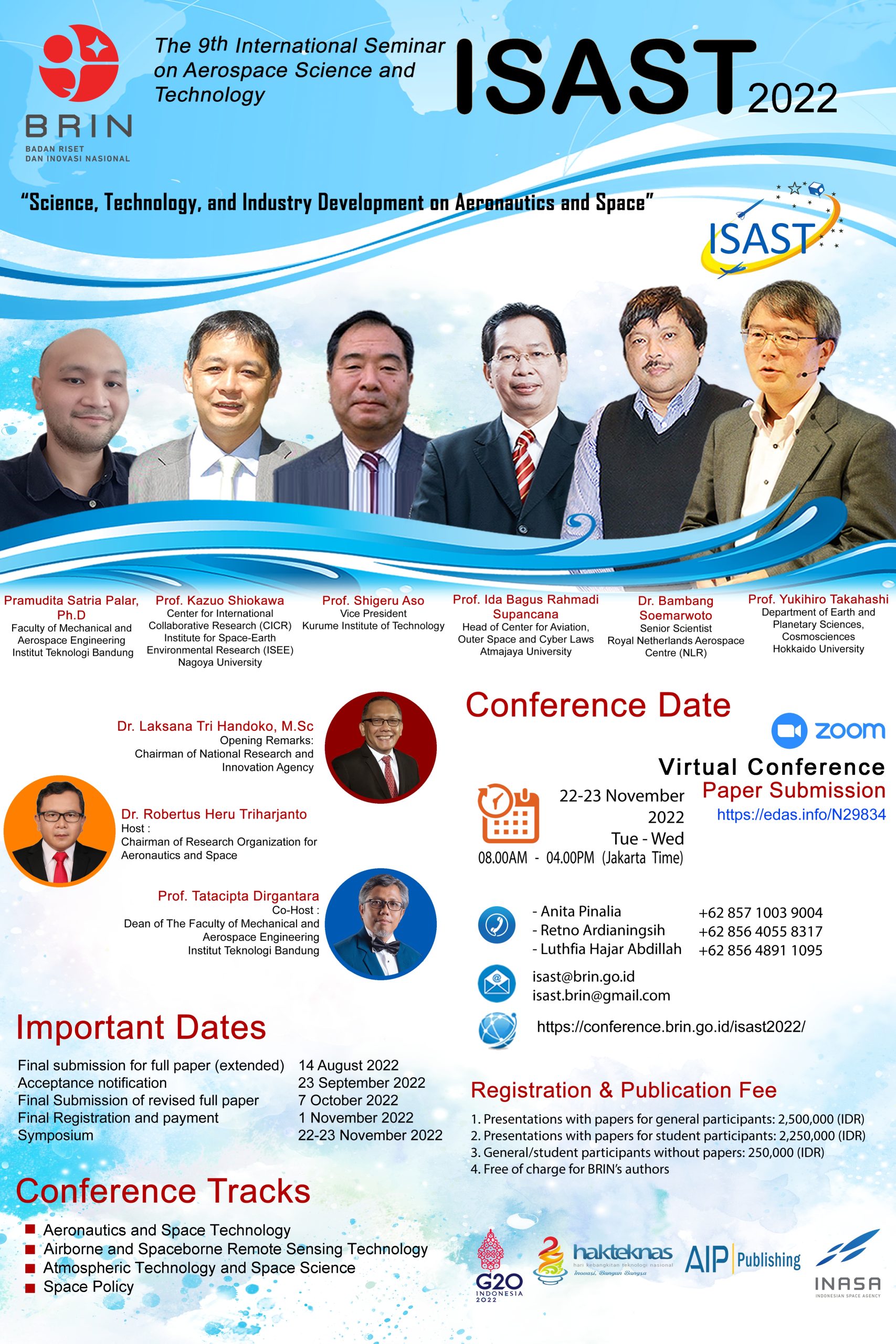The 9Th International Seminar on Aerospace Science and Technology
ISAST 2022
22-23 November 2022 - Internet Based Seminar
ISAST 2022
The international seminar is the continuation of International Seminar on Aerospace Science and Technology (ISAST) series, which has been held by Indonesian National Institute of Aeronautics and Space (LAPAN) since 2013. After the integration to National Research and Innovation Agency (BRIN), the seminar is managed by Research Organization of Aeronautics and Space (ORPA) and sponsored by BRIN. The participants of the seminar are Indonesian and international students, researchers and engineers from various disciplines in aeronautics and space, from research institutions, universities, armed services, and industries. Previous ISAST seminars have presented the results of research and development the aerospace science and technology conducted in Indonesia and South-East Asia, as well as invited international speakers are from Japan, Germany, Spain, Netherland, France, China, Malaysia, and Korea.
As in the previous seminar, the target participants of the seminar are Indonesian and international students, researchers and engineers from various disciplines in aeronautics and space technology, from research institutions, universities, armed services, and industries.
Theme
Science, Technology and Industry Development on Aeronautics and Space
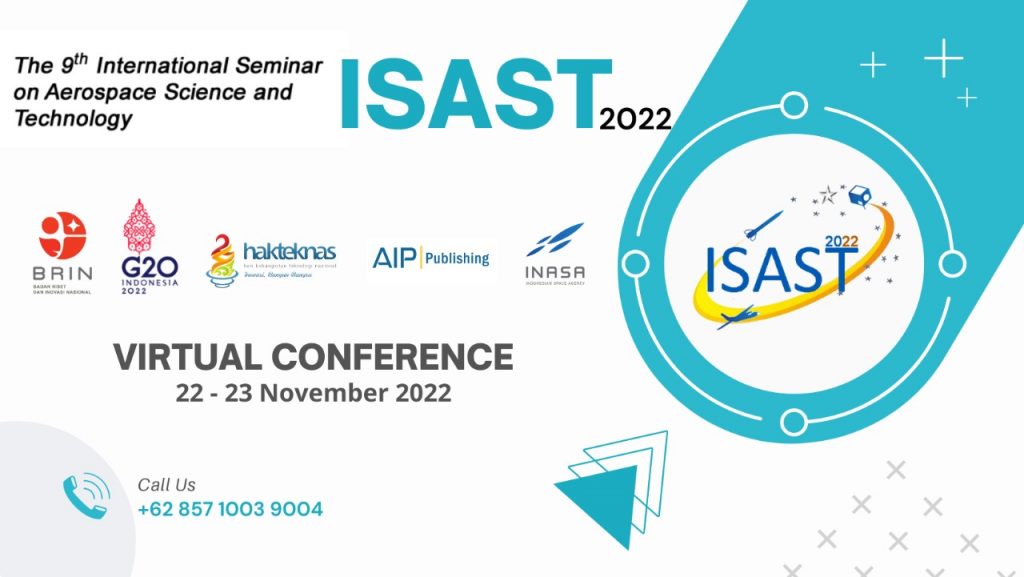
Invited Speakers
Prof. Tatacipta Dirgantara
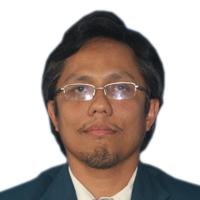
Dr. Tatacipta Dirgantara is presently a Professor of Computational Mechanics in the Faculty of Mechanical and Aerospace Engineering, Institut Teknologi Bandung (FMAE – ITB), Indonesia. Since June 2020, he has been appointed as the Dean of FMAE – ITB. He obtained both his bachelor’s and post graduate degree in Mechanical Engineering from Institut Teknologi Bandung, and completed his Ph.D. degree from Queen Mary, University of London, United Kingdom. He is also registered as a professional engineer from the Institution of Engineers Indonesia and ASEAN Federation of Engineering Organisations. He has more than 20 years’ experiences in research, teaching, consultancy, and training assignment at national xvii as well as international level in the area of solid and structural mechanics, computational and experimental mechanics, fracture mechanics and bio mechanics. He has contributed towards more than 80 research papers in international and national journals and conferences, and owns several patents. He has authored a book titled “Boundary Element Analysis of Crack in Shear Deformable Plates and Shells”, and co-authored a book titled, “Boundary Element Methods in Engineering and Sciences, Computational and Experimental Methods in Structures”. He is currently an editorial board member of the Journal of Engineering and Technological Sciences. He has also supervised more than 100 undergraduate, master and doctoral students.
Pramudita Satria Palar, S.T, M.T, Ph.D

Pramudita Satria Palar, Ph.D., is an Assistant Professor at the Faculty of Mechanical and Aerospace Engineering, Bandung Institute of Technology, Indonesia. Prior to his current position, he was a Research Fellow at the Institute of Fluid Science, Tohoku University, Japan, collaborating with Associate Prof. Koji Shimoyama and Prof. Shigeru Obayashi on the improvement of Bayesian optimization and the application of surrogate-based optimization and design exploration in aerospace engineering. During his postdoctoral position, he visited Leiden Institute of Advanced Computer Science at Leiden University as a visiting researcher. Dr. Palar’s research interests are primarily in the areas of aerodynamic design optimization, data-driven fluid mechanics, machine learning, uncertainty and sensitivity analysis, and their applications in aerospace, biomedical, and general engineering. He heavily employs machine learning and surrogate models in his study to assist engineering design and analysis. Dr. Palar earned his Ph.D. degree in Aeronautics and Astronautics from the University of Tokyo, Japan. He conducted his Ph.D. research on the topic of multi-objective aerodynamic robust optimization, where he developed and investigated a surrogate-assisted memetic algorithm method and a multi-fidelity uncertainty quantification technique based on polynomial chaos expansion. During his doctoral study, he was also a visiting researcher at the Engineering Design Center of the University of Cambridge, United Kingdom, and wrote several collaborative papers with the Center. Aside from his life as an academic, he enjoys playing guitar, going to cafes with his family, and reading though-provoking books. His favorite book so far is “A History of Western Philosophy” by Bertrand Russell.
Prof. Kazuo Shiokawa
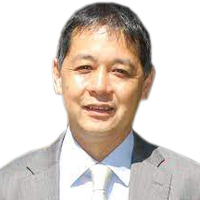
Dr. Kazuo Shiokawa is currently a professor and a vice-director of the Institute for Space-Earth Environmental Research (ISEE), Nagoya University. He is also the director of the Center for International Collaborative Research (CICR) of ISEE. In 1990 after the graduation of Master course of Tohoku University, he joined the Solar-Terrestrial Environment Laboratory, Nagoya University, as a research associate. He obtained a Ph.D degree in 1994 in Nagoya University. He was a visiting scientist of the Max-Planck-Institut fuer extraterrestrische Physik, Germany, from July 1996 to June 1997. He became an associate professor on January 1999 and full professor on September 2008. He has acted as a co-chair of the 5-year program VarSITI (Variability of the Sun and Its Terrestrial Impact) of the Scientific Committee on Solar-Terrestrial Physics (SCOSTEP) for 2014-2018 and as the President of SCOSTEP since 2019. His topic of research is space science and aeronomy in general, particularly for dynamical coupling of the solar wind, magnetosphere, ionosphere, thermosphere, and mesosphere. He has been developing and operating multi-point ground-based optical and electromagnetic instruments from high to equatorial latitudes at various places in the world, to measure aurora and airglow as well as ULF/ELF/VLF waves.
Prof. Shigeru Aso
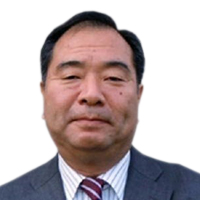
Prof. Shigeru Aso, is a professor at the Faculty of Engieering Department of Transport mechanical Engieering, Kurume Institute of Technology – Japan. Prof. Aso’s research interests are primarily in the areas of aerospace engineering; small electric aircraft, space transportation systems engineering, hybrid rocket, aerodynamic heating, aerodynamics.
Prof. Ida Bagus Rahmadi Supancana
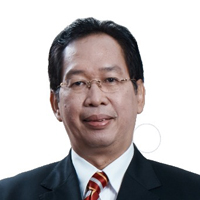
Prof. Dr. Ida Bagus Rahmadi Supancana, SH., MH., is a Professor of Law and Lecturer for Undergraduate Study for several subjects, such as International and National Contracts Law; Air and Space Law, Capita Selecta of Economic Law, Atma Jaya University, Jakarta. He is an Indonesian legal expert and advocate, specializing in air law, regulatory reform, alternative dispute resolution law, and data protection law. Dr. Supancana earned his Ph.D. degree in Law – Air and Space Law from Leiden University, Netherlands. He conducted his Ph.D. research on the topic The International Regulatory Regime Governing the Utilization of Earth Orbits.
Dr. Bambang Soemarwoto
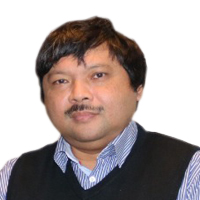
Dr. Bambang I. Soemarwoto is a senior research scientist at the Department of Flight Physics and Loads, Aerospace Vehicles Division, Netherlands Aerospace Centre NLR in Amsterdam with a Ph.D degree in aerospace engineering from Delft University of Technology in 1996. His research area includes unsteady aerodynamics, aerodynamic modelling for flight simulation, store separation, with specialization in aerodynamic design optimization methods using optimal control theory (the adjoint method) for aircraft and gas turbine components. He has been involved in various real-life industrial projects for the aerodynamic analysis and design optimization of regional jet, business jet, turboprop, future concept aircraft, gas turbine compressor, turbines and labyrinth seals as a project leader and a group member in national (Dutch) and international (Europe and North Atlantic countries) framework. He has contributed to research within EU Framework Programmes, Horizon 2020 and Clean Sky 2.
Prof. Yukihiro Takahashi
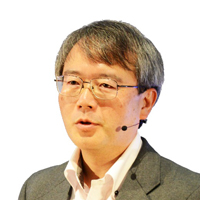
Since Prof Yukihiro Takahashi started working at Hokkaido University in 2009, Prof Yukihiro Takahashi have been communicating with many colleagues from a number of other areas besides space science. Prof Yukihiro Takahashi noticed that the sophisticated microsatellites equipped with advanced sensors, such as a liquid crystal filter telescope, are very useful for forestry science, agriculture, fishery science and environmental science. And now, Prof Yukihiro Takahashi have been participating on joint projects with professors in such areas.
His Research mainly focuses on Natural sciences, Space and planetary science, Environmental science, Agricultural science, Environmental
Conference Track
1. Aeronautics and Space Technology aerodynamics, astrodynamics, Aerostructure Material structure Light structures, propulsions, Power and Battery Technology propellant, energetic materials, avionics, Payload system Communication system flight dynamics, flight control system rocket technology, satellite technology, aircraft technology, flight sensor, UAV applications.
2. Airborne and Spaceborne Remote Sensing Technology Remote sensing technologies and applications; GIS technologies and applications; geospatial technologies, industries & applications; geospatial for research and management; space borne systems for terrestrial and marine; satellite sensor systems and applications Space borne, airborne, Unmanned Aerial System/Vehicle (UAS/UAV) Lidar techniques and applications Synthetic Aperture Radar techniques and applications Hyperspectral techniques and application Geomatic and Surveying Sciences Environmental sciences, mapping, monitoring Climate Change impact assessment, modelling and predictions Forestry and agricultural applications Smart Agriculture Smart Forests Urban & Regional Planning Marine and maritime applications National Defense and Controls Disaster Management Big data processing/ Cloud computing of spatial data
3. Atmospheric Technology and Space Science Research of visual atmospheric phenomena Instruments and classification scales Atmospheric science Atmospheric composition research Research into cyclones and air flow Astronomical instruments. Astrophysics. Celestial mechanics. Cosmology. Extragalactic systems. Radioastronomy. Solar system, Sun and planets Stars and Galaxy Meteorology Observation networks and weather forecasting Numerical weather prediction Climatology Atmospheric physics Spatial scales Some meteorological principles Dynamic meteorology Applications Aviation meteorology Spacae Weather
Submission Guideline
- Prospective authors are invited to submit original full paper of 5 to 10 pages (including tables, figures and references) which is not currently under review in any other conference or journal and has not been previously published.
- All accepted and presented papers will be submitted to AIP Conference Proceedings which is indexed by SCOPUS.
- Please kindly refer to AIP Conference Proceedings template. Use Article Preparation Checklist for standard publication format, failing to conform to the standard format will result in rejection.
- All papers must be submitted electronically through EDAS. If you do not have EDAS account, please create an account to submit your paper.
- Blind peer-review process will be used to evaluate all submitted papers. The decision regarding the acceptance of the papers is at the discretion of the Editors.
Paper Submission
Important Date
Final submission for full paper: 14 August 2022
Acceptance notification: 23 September 2022
Final Submission of revised full paper: 7 October 2022
Final Registration and payment: 1 November 2022
Symposium: 22-23 November 2022
Venue
The seminar will be held online using multiple platforms. The platform will be announced later. In general, the plenary session will be using Meeting platform and Live interaction platform. While parallel sessions will be using Meeting platform limited to the participant in each room
Programme
Day 1 (Tuesday, 22 November 2022)
| Time | Agenda | Duration | Room | PIC | |
| 08.00 – 08.15 | Registration (Joining the zoom webinar) | 15 minutes | Main Room | Secretariat | |
| 08.15 – 09.00 | Opening Ceremony |
5 minutes 5 minutes 5 minutes
15 minutes Main Room
15 minutes | MC | ||
| *The Rules of conference announcement | |||||
| *Indonesia Raya Anthem | |||||
* Welcome Words by ISAST General Chair Farohaji Kurniawan, S.T., M.Eng., Ph.D | |||||
* Welcoming Speech by Dr. Robertus Heru Triharjanto, B.Eng.,M.Sc., Chairman of Research Organization for Aeronautics and Space | |||||
Dr. Laksana Tri Handoko, Chairman of National Research and Innovation Agency | |||||
| 09.00 – 11.30 | Keynote Addresses : 09.00 – 09.40 Prof. Yukihiro Takahashi | 40 minutes |
Main Room | Moderator : Lilis Mariani, M.Eng | |
| 09.40 – 10.20 | 40 minutes | ||||
| Dr. Bambang Soemarwoto | |||||
| 10.20 – 11.00 | 40 minutes | ||||
| Prof. Kazuo Shiokawa | |||||
| 11.00 – 11.30 | 30 minutes | ||||
| Discussion | |||||
| 11.30 – 11.35 | Photo Session | 5 minutes | MC | ||
| 11.35 – 12.50 | Lunch Break | 75 minutes | MC | ||
| 12.50 – 16.10 | Parallel Seminar Sessions | 190 | Breakout | Zoom Host | |
| minutes | Room A, B, | ||||
| C, D, E | |||||
Day 2 (Wednesday, 23 November 2022)
| Time | Agenda | Duration | Room | PIC | |
08.15 – 08.30 | Registration (Joining the zoom webinar) | 15 minutes | Main Room | Secretariat | |
08.30 – 08.45 | Welcoming Speech by Prof. Tatacipta Dirgantara | 15 minutes | Main Room | MC | |
08.45 – 11.15 | Keynote Addresses : 08.45 – 09.25 Prof. Shigeru Aso | 40 minutes |
Main Room | Moderator : Dr. Muhammad | |
| 09.25 – 10.05 | 40 minutes | Ilham | |||
| Prof. Ida Bagus Rahmadi Supanca | Adhynugraha | ||||
| 10.05 – 10.45 | 40 minutes | ||||
| Pramudita Satria Palar, Ph.D | |||||
| 10.45 – 11.15 | 30 minutes | ||||
| Discussion | |||||
11.15 – 11.20 | Photo Session | 5 minutes | MC | ||
11.20– 12.35 | Lunch Break | 75 minutes | MC | ||
12.35 – 15.35 | Parallel Seminar Sessions | 180 minutes | Breakout | Zoom Host | |
| Room A, B, | |||||
| C, D, E | |||||
15.35 – 15.45 | Closing Ceremony | 10 minutes | Main Room | MC | |
| By Prof. Tatacipta Dirgantara | |||||
Registration
4. Free of charge for BRIN’s authors
Paper Submission
Proceeding
Organizer
Advisory Board
Dr. Robertus Heru (Research Organization forAeronautics and Space, BRIN, Indonesia)Prof. Dr. Ir. Rr. Erna Sri Adiningsih, M.Si. (Research Center for Remote Sensing, BRIN, Indonesia)
Prof. Tatacipta Dirgantara (Faculty of Mechanical and Aerospace Technology, ITB, Indonesia)
Dr. Arif Nur Hakim, M.Eng.(Research Center for Rocket Technology, BRIN, Indonesia)
Dr. Fadillah Hasim, M.Sc (Research Center for Aeronautics Technology, BRIN, Indonesia)
Dr. Wahyudi Hasbi, S.Si., M.Kom (Research Center for Satellite Technology, BRIN, Indonesia)
Dr. Emanuel Sungging Mumpuni, S.Si., M.Si. (Research Center for Space, BRIN, Indonesia)
Dr. Rahmat Arief, Dipl.Ing. (Research Center for Remote Sensing, BRIN, Indonesia)
Prof. Dr. Ir. Heri Budi Wibowo, M.T. (Research Center for Rocket Technology, BRIN, Indonesia)
Organizing Comittee
General ChairFarohaji Kurniawan, S.T., M.Eng., Ph.D (Research Center for Aeronautics Technology, BRIN, Indonesia)
Secretariat Chair
Anita Pinalia, S.T., M.Si. (Research Center for Rocket Technology, BRIN, Indonesia)
Secretariat Member
Retno Ardianingsih, S.T, M.T (Research Center for Rocket Technology, BRIN, Indonesia)
Luthfia Hajar Abdillah, S.T, M.T (Research Center for Rocket Technology, BRIN, Indonesia)
Prawita Dhewi, A.Md. (Research Center for Rocket Technology, BRIN, Indonesia)
Editorial and Publication Chair
Dr. Harry Septanto, M.T (Research Center for Smart Mechatronics, BRIN, Indonesia)
Editorial and Publication Member
Dr. Ery Fitrianingsih, S.T., M.Sc. (Research Center for Satellite Technology, BRIN, Indonesia)
Cahya Edi Santosa, M.T., Ph.D. (Research Center for Aeronautics Technology, BRIN, Indonesia)
Mario Batubara, M.Si., Ph.D (Research Center for Space, BRIN, Indonesia)
Peberlin Parulian Sitompul, S.T., M.T., Ph.D. (Research Center for Space, BRIN, Indonesia)
Dr. Mardianis, S.H., M.H (Directorate of Policy Formulation for Research, Technology, and Innovation, BRIN, Indonesia)
Dr. Erma Yulihastin, S.Si, M.Si. (Research Center for Climate and Atmosphere, BRIN, Indonesia)
Dr. Johan Muhamad, M.Sc. (Research Center for Space, BRIN, Indonesia)
Dr. Prayitno Abadi, M.Si. (Research Center for Climate and Atmosphere, BRIN, Indonesia)
Dr. Muhammad Ilham Adhynugraha (Research Center for Aeronautics Technology, BRIN, Indonesia)
Yenni Vetrita, S.Hut., M.Sc., Ph.D. (Research Center for Remote Sensing, BRIN, Indonesia)
Afni Restasari, S.Si.,M.Eng (Research Center for Biomass and Bioproducts, BRIN, Indonesia)
Publicity and IT Chair
Wahyudi, M.Kom. (Research Center for Aeronautics Technology, BRIN, Indonesia)
Publicity and IT Member
Riki Ramdani Saputra, S.T. (Center for Data and Information, BRIN, Indonesia)
Renny Agustina Astuti, S.Pd. (Bureau for Public Communication, General Affairs, and Secretariat, BRIN, Indonesia)
Scientific Comittee
Prof. Josaphat Tetuko Sri Sumantyo, (Ph.D Chiba University, Japan )Prof. Dr-Ing. Nicolas Gascoin, (Institut National des Sciences Appliques, France )
Prof. Dr. Tatsuhiko Aizawa, (Shibaura Institute of Technology, Japan )
Prof. Dr. Mohamed Djemai, (University of Valenciennes, France)
Prof. Rini Akmeliawati, (Univesity of Adelaide, Australia)
Prof. Dr. Muhaimin Ismoen, (Universiti Teknologi Brunei, Burnei Darussalam)
Prof. Dr. Yulfian Aminanda, (Universiti Teknologi Brunei, Burnei Darussalam)
Prof. Dr. Qin Shiyin, (Beihang University, People Republic of China)
Prof. Caner Ozdemir, (Mersin University, Turkey)
Prof. Stephen Gao, (University of Kent, United Kingdom)
Prof. Kazuo Shiokawa, (Institute for Space-Earth Environmental Research (ISEE), Nagoya University, Japan)
Prof. Mardina Abdullah, (Universiti Kebangsaan Malaysia, Malaysia)
Prof. Thomas Djamal (BRIN, Indoonesia)
Prof. Dony Kushardono (BRIN, Indoonesia)
Prof. Dr. Wahyu Widada, (BRIN, Indoonesia)
Prof. Dr. Heri Budi Wibowo, (BRIN, Indoonesia)
Prof. Dr. Edy Hermawan, , (BRIN, Indoonesia)
Prof. Dr. Erna Sri Adiningsih, , (BRIN, Indoonesia )
Prof. Igif G. Prihanto, , (BRIN, Indoonesia )
Dr. Susumu Saito, (Electronic Navigation Research Institute (ENRI), Tokyo, Japan)
Dr. Yuichi Otsuka, (Institute for Space-Earth Environmental Research (ISEE), Nagoya University, Japan)
Dr. Septi Perwitasari, (NICT, Japan)
Dr. Rezy Pradipta , (Boston College, USA)
Dr. Natchimuthuk Gopalswamy, (Goddard Space Flight Center (GSFC), NASA, USA)
Dr. Robertus Heru Triharjanto, , (BRIN, Indoonesia )
Dr. Fadillah Hasim, , (BRIN, Indoonesia)
Dr. Arif Nur Hakim, , (BRIN, Indoonesia)
Dr. Wahyudi Hasbi, , (BRIN, Indoonesia )
Dr. Emanuel Sungging, , (BRIN, Indoonesia)
Dr. Rahmat Arief, , (BRIN, Indoonesia)
Dr. Rika Andiarti, , (BRIN, Indoonesia)
Dr. Hakim, Astronomi, (Institut Teknologi Bandung (ITB) / Observatorium Astronomi ITERA Lampung (OAIL), Indonesia)
Dr. Dhani Herdiwijaya, (Astronomy, Institut Teknologi Bandung (ITB), Indonesia)
Romie Oktovianus Bura, BEng.(Hons.), MRAeS, Ph.D., CIQnR., CIQaR, (Indonesia Defense University, Indonesia)
Farohaji Kurniawan, Ph.D (BRIN, Indonesia) Dr. Kendra Hartaya, ,(BRIN, Indoonesia )
Dr. Bagus Hayatul Jihad, , (BRIN, Indoonesia)
Dr. Ir. Dony Kushardono, M.Si, (PRPJ, BRIN)
Dr. Akhmad Farid Widodo, , (BRIN, Indoonesia) Dr. Effendi Dodi Arisandi, , (BRIN, Indoonesia)
Dr.Ir. Rais Zain M.Eng, (Institut Teknologi Bandung, Indonesia)
Dr. Harry Septanto, (BRIN, Indoonesia)
Dr. Ridanto Eko Poetro, (Institut Teknologi Bandung, Indonesia)
Dr. Jupriyanto, (Indonesia Defense University, Indonesia)
Dr. Winardi sani, (Universitas Sangga Buana, Indonesia)
Dr. Agoes Moelyadi, (Institut Teknologi Bandung, Indonesia)
Dr. Rhea Patricia Liem, (The Hong Kong University of Science and Technology, Hong Kong)
Dr. Emir Mauludi Husni, (Institut Teknologi Bandung, Indonesia)
Dr. I Gde Agung, (Garuda Maintenance Facility, Indonesia)
Dr. Himsar Ambarita, (Universitas Sumatra Utara, Indonesia)
Dr. Edy Karyadi Alimin, (Universitas Dirgantara Marsekal Suryadarma, Indonesia)
Dr. Cahyo, (Universitas Mataram, Indonesia)
Ony Arifianto Ph.D, (Institut Teknologi Bandung, Indonesia)
Dr. Bambang S. P. Abednego, (Institut Teknologi Del, Indonesia)
Rianto Adhy Sasongko, Ph.D, (Institut Teknologi Bandung, Indonesia)
Herma Yudhi Irwanto, M.Eng, , (BRIN, Indoonesia )
Dr. Ressa Octavianty, (International University Liaison Indonesia, Indonesia)
Dipl. Ing. Agus Bayu Utama, MSc.ME, , (BRIN, Indoonesia )
Dr. Yazdi Ibrahim Jenie, (Institut Teknologi Bandung, Indonesia)
Dr. Edi Sofyan, (Swiss German University)
Ir. Atik Bintoro, MT, , (BRIN, Indoonesia)
Dr. Mabe Siahaan (BRIN, Indoonesia)
Dr. Edi Kurniawan, , (BRIN, Indoonesia)
Dr. Bambang Setiadi, , (BRIN, Indoonesia)
Prof. Dr. Ir. Eko Tjipto Rahardjo, M.Sc, (Universitas Indonesia, Indonesia)
Prof. Dr. Ir. Fitri Yuli Zulkifli, ST., M.Sc, (Universitas Indonesia, Indonesia)
Dr. Wahyu Putro, (National Institute of Advanced Industrial Science and Technology, Japan)
Dr. Bagus Nugroho, (The University of Melbourne, Australia)
Dr. Mirza Muhammad Waqar, (Lumir Inc., South Korea)
Dr. Chua Ming Yam, Multimedia (University Malaysia, Malaysia)
Dr. Mohd Zafri Baharuddin, (Universiti Tenaga Nasional, Malaysia)
Dr. Achmad Munir, (Institut Teknologi Bandung, Indonesia)
Dr. Yuta Izumi, (University of Tokyo, Japan)
Pakhrur Razi, Ph.D, (Universitas Negeri Padang, Indonesia)
Contact
- isast@brin.go.id
- isast.brin@gmail.com
- Anita Pinalia +62 857-1003-9004
- Retno Ardianingsih +62 856-4055-8317
- Luthfia Fajar Abdillah +62 856-4891-1095
